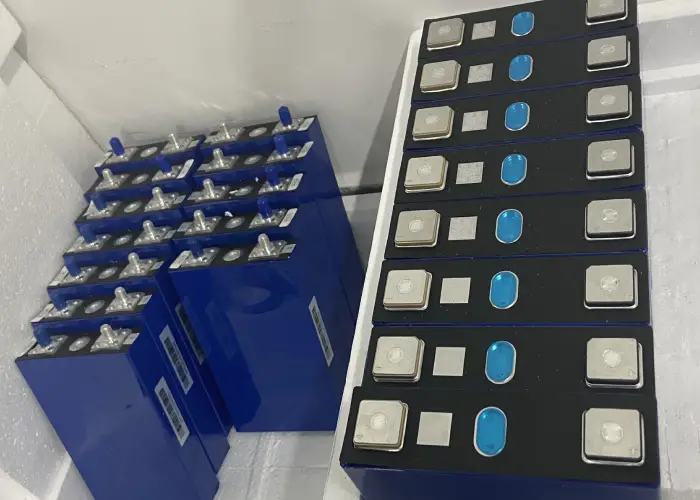In the field of energy storage, lithium iron phosphate batteries have attracted attention as a new option to replace lead-acid batteries. Many people have questions about this new type of battery—are they better? How often do they need to be replaced? This article will provide detailed information about LiFePO4 batteries to help people make more informed decisions.
What Are Lithium Iron Phosphate Batteries?
Lithium iron phosphate batteries, also known as LiFePO4 or LFP batteries, differ from traditional lead-acid batteries in that their cathode is made of lithium iron phosphate, while the anode is made of graphite and carbon. These batteries offer high energy density and stability and have a wider operating temperature range compared to lead-acid batteries. Over the years, as production technology has advanced, they have been widely used in commercial solar energy storage and electric vehicles (EV).
What Are the Advantages of Lithium Iron Phosphate Batteries?
Lithium iron phosphate is regarded as the best alternative to lead-acid batteries because it excels in many aspects, including performance and safety. Here are the specific advantages:
Increased Safety:
LFP as a material is more stable than lead-acid batteries. Compared to other lithium battery materials, lithium iron phosphate batteries are also safer, boasting excellent thermal stability. This means they are less prone to overheating and catching fire.
Longer Lifespan:
Compared to the 300-500 cycle life of lead-acid batteries, lithium iron phosphate batteries last much longer. Even with 100% depth of discharge, they can achieve over 4000 cycles.
Higher Energy Density:
Lithium iron phosphate batteries have a much higher energy density, nearly four times that of lead-acid batteries. This allows LiFePO4 batteries to save more space.
Abundant Raw Materials:
Iron and phosphate are very common in the Earth’s crust. Lithium iron phosphate does not contain nickel and cobalt, both of which are limited in supply and expensive.
More Environmentally Friendly:
Lithium iron phosphate batteries are more eco-friendly than lead-acid batteries because they do not contain harmful metals like lead or cobalt. They are easier to recycle and dispose of.
Faster Charging:
These batteries support higher charging currents, making them charge much faster than lead-acid batteries.
More Stable Discharge:
LiFePO4 batteries provide more stable discharge voltage, which helps maintain consistent performance and ensures that devices and systems run smoothly. This stability is crucial for sensitive electronic equipment and applications that require reliable power.
Ease of Use:
LiFePO4 batteries require low maintenance, perform reliably across a wide range of temperatures, and are easy to use without the need for the regular maintenance that lead-acid batteries require.
What Is the Lifespan of Lithium Iron Phosphate Batteries?
The lifespan of lithium iron phosphate batteries can reach up to 15 years, with current technology allowing for over 4000 cycles at 100% depth of discharge. Even if the battery is fully charged and discharged every day, it can still be used for decades without losing its activity. This is a feat that other battery materials cannot achieve.
Comparison table of cycle life of LFP battery and other batteries:
| Battery Type | Typical Cycle Life (at 100% DoD) | Typical Cycle Life (at 50% DoD) |
|---|---|---|
| Lithium Iron Phosphate (LiFePO4) | 2000-4000+ cycles | 6000-8000+ cycles |
| Lithium Nickel Manganese Cobalt Oxide (NMC) | 1000-2000 cycles | 3000-5000 cycles |
| Lithium Cobalt Oxide (LCO) | 500-1000 cycles | 1500-2500 cycles |
| Lead-Acid | 300-500 cycles | 600-1000 cycles |
| Nickel-Cadmium (NiCd) | 1000-1500 cycles | 2000-3000 cycles |
| Nickel-Metal Hydride (NiMH) | 500-1000 cycles | 1500-2000 cycles |
When properly managing the factors that affect LiFePO4 batteries, their cycle life can be even longer.
What Factors Affect the Cycle Life of Lithium Iron Phosphate Batteries?
Depth of Discharge:
The deeper the discharge, the fewer cycles the battery will last. Controlling the depth of discharge can effectively extend the battery’s lifespan. A simple estimate is that 100% depth of discharge allows for 4000 cycles, while 50% depth of discharge can allow for 8000 cycles. The actual situation is more complex.
Over-Discharge:
Over-discharging can damage the internal structure of the battery, reducing its cycle life, and even leading to the battery failing to function properly. If the battery is fully discharged and not recharged promptly, it can cause the voltage to drop below the rated level due to BMS (Battery Management System) or self-discharge, leading to the battery entering a dormant state.
Discharge Rate:
High discharge rates increase the battery’s internal resistance, accelerating aging and reducing the number of cycles.
Environmental Temperature:
Extreme temperatures, whether too high or too low, can affect the chemical reaction rate in the battery, thereby reducing the number of cycles.
Battery Quality:
The materials and manufacturing process directly affect the battery’s lifespan. High-quality batteries usually have a longer cycle life.
How to Maximize the Lifespan of Lithium Iron Phosphate (LiFePO4) Batteries
Set the Depth of Discharge:
Avoid deep discharges as much as possible and keep the discharge within a reasonable range to extend the battery’s lifespan. Some Battery Management Systems (BMS) allow you to set the depth of discharge, enabling control over discharge levels based on actual usage, thus preventing unnecessary strain on the battery.
Avoid Over-Discharge:
Recharge the battery promptly to prevent the charge level from dropping too low, which could damage the battery. Even when not in use, it’s important to charge the battery at least once a month to avoid it entering a dormant state.
Store in an Appropriate Environment:
Although LiFePO4 batteries can operate in temperatures ranging from -20°C to 50°C, storing them in a cool environment can significantly enhance their lifespan. Keeping the battery in a shaded, cool place reduces thermal stress and prolongs its overall life.
Perform Regular Inspections:
Regularly check the battery’s condition to identify and address any potential issues early, ensuring the battery remains in optimal condition. Pay special attention to exposed contact points, which could rust or develop poor connections, and address any such issues promptly to maintain battery performance.
Conclusion
Lithium iron phosphate batteries are far ahead of lead-acid batteries in terms of service life. If you are considering choosing one of them, I would undoubtedly recommend the former, especially for home solar energy storage batteries, where nothing is more important than safety. At the same time, correctly choosing an excellent battery supplier is also the best guarantee.
FAQ:
How Long Will a LiFePO4 Battery Hold a Charge?
LiFePO4 batteries are known for their low self-discharge rate, which is around 2-3% per month. typically retaining 80-90% of its charge over a period of several months.
Do LiFePO4 Batteries Degrade If Not Used?
LiFePO4 batteries do experience some level of degradation over time, even when not in use. However, this degradation is minimal compared to other types of batteries.
Do LiFePO4 Batteries Lose Charge When Not in Use?
Yes, LiFePO4 batteries do lose some charge when not in use due to their self-discharge rate, but this loss is very minimal. At the same time, if the battery is connected to other modules (such as BMS), it will also accelerate the loss of power.
Save Money, Protect Environment
PKNERGY helps you reduce your energy bills for your home solar energy storage, store your solar energy for use anytime- at night or during an outage.





